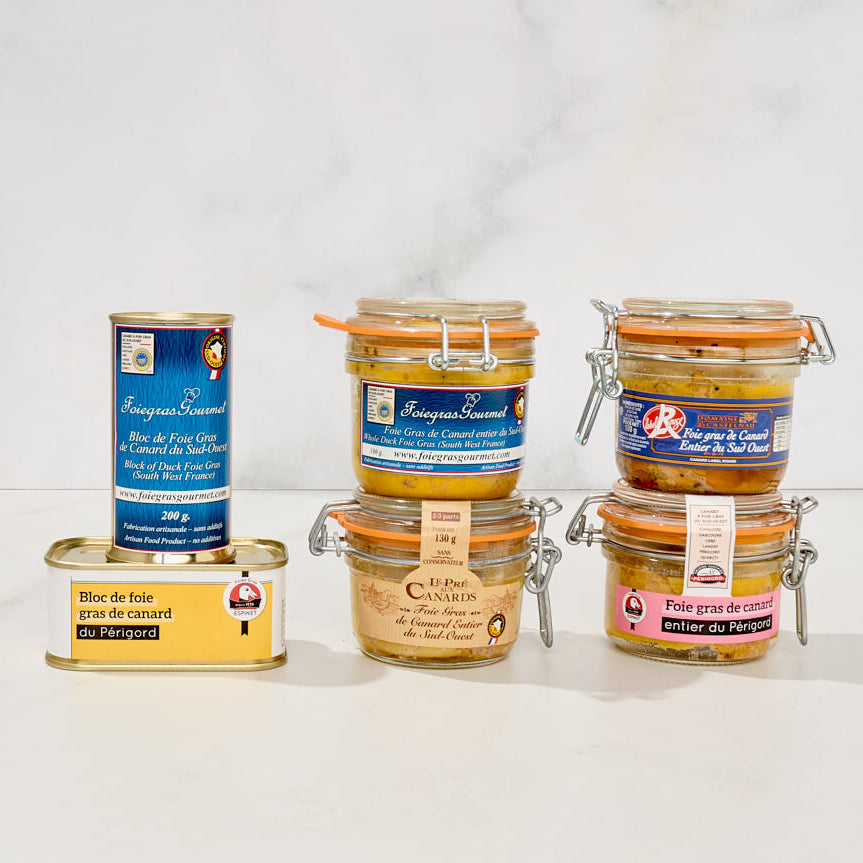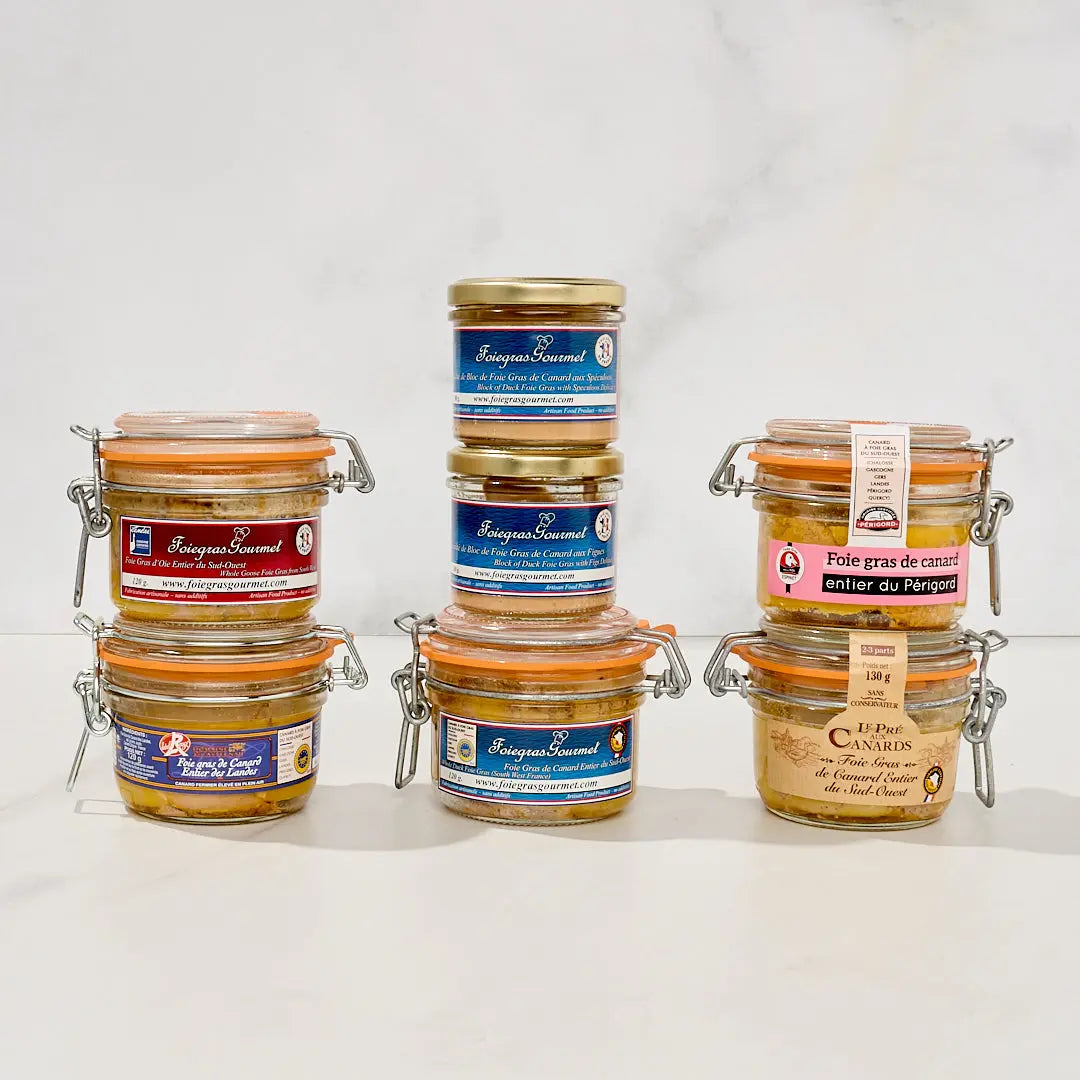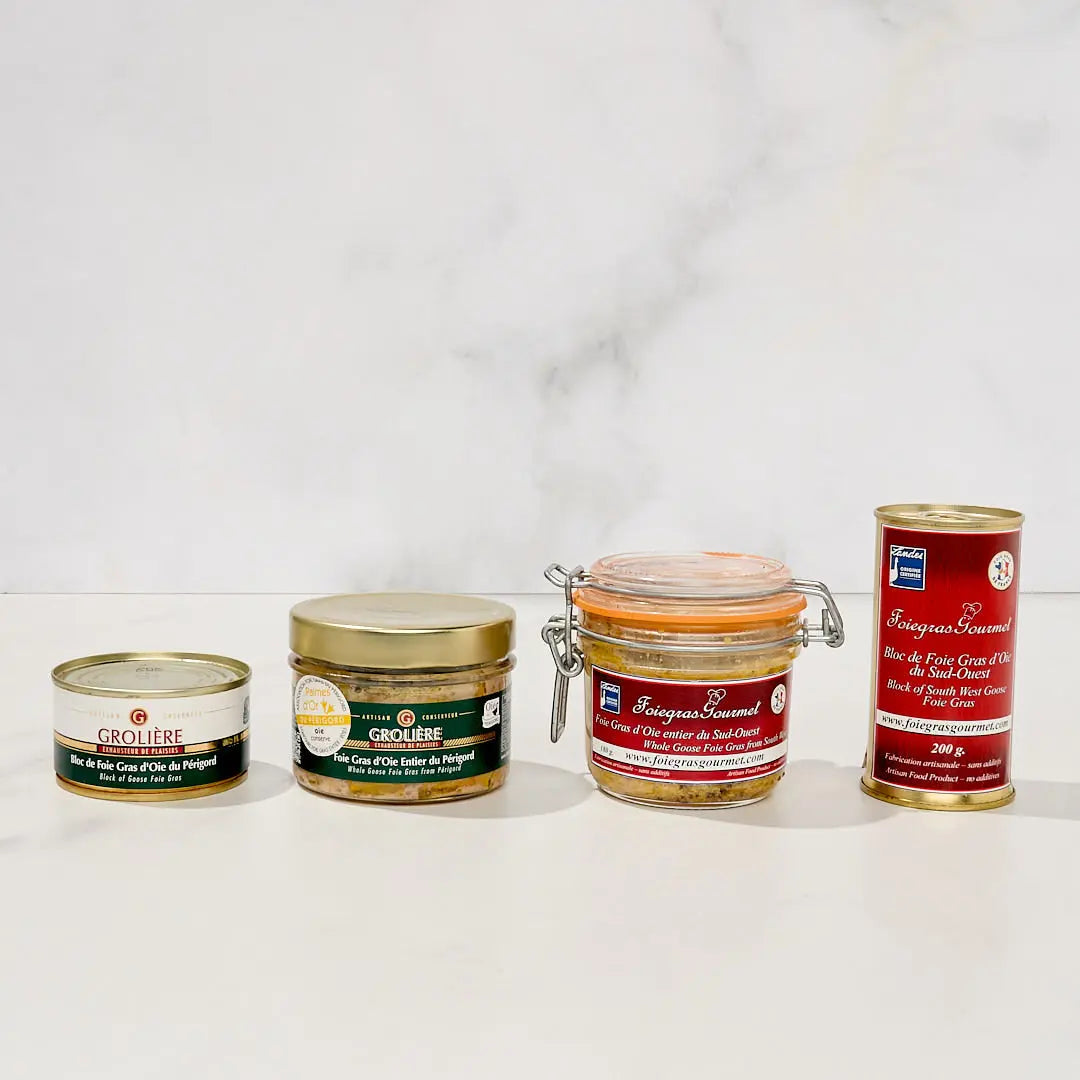Pâté and foie-gras: differences and similarities that you need to know
Foie gras, a delicacy appreciated worldwide for its exquisite flavor and texture, is often compared to pâté due to their similarities in appearance and culinary use. However, there is a crucial distinction between the two. We will explore in detail what makes duck or goose liver unique and how it differs from pâté and its distinctive characteristics.

Wherever you are in the world, foie gras can be found on the internet. However, many of the products are pâtés, pates de foie gras, duck pate, duck liver patés, goose pate and goose liver pates. So, let us take a little look at what makes them different from one another.
What is pate?
In culinary terms, a pate (or pâté) is a mixture of finely chopped meat or offal (such as liver), fats, vegetables, eggs, herbs, spices and other ingredients. Sometimes an alcohol, such as Cognac, Armagnac or Porto might be added too.
Industrial companies who manufacture spreads will often include preservatives, artificial colouring, additives and flavourings, such as ascorbic acid (E300) and sodium nitrite (E250).
In contrast, whole foie gras or a bloc foie gras by its very definition contains only the foie gras itself plus a little seasoning (salt and pepper – nothing else).
What is a pate de foie gras?
“Foie gras paté, pate de foie gras, goose liver pate or duck liver pate” is prepared using foie gras (it must contain at least 50%) but cannot be called simply “foie gras” which is fully legally protected. Foie gras pate contains more than simply foie gras and seasoning; it will often include some lower quality fatty livers.

How is foie gras pate made?
To produce pate de foie gras, the liver and other ingredientes are typically seasoned with herbs, spices, and sometimes alcohol, then cooked and pureed until it reaches a smooth, creamy consistency. This mixture is then typically cooked in a terrine or mold, often with a layer of fat on top to preserve and enhance the flavor.

If prepared in a deep, oval or rectangular mould, the pate is known as a terrine. To make a good foie gras terrine, you need to use good quality fresh (grade A) foie gras and prepare it either in a bain marie or a pressure cooker – adding nothing but salt and pepper.
Restaurant chefs do not generally like to mix the duck liver or meat with pork or other poultry such as chicken in their dishes. Foie gras is considered by them as the perfect delicacy to serve as appetizers, and they may simply add rich black Périgord truffles or a sweet jelly.
Nevertheless, it is important to use all the parts of the animal so many recipes do require mixing the meat or liver of duck or goose.
If we avoid products from mass production, the artisanal pâtés and dishes (Pâtés Périgueux, pâtés Grand-Mère, mousse etc), cooked in small quantities by local small producers, can have rich and pleasant textures and flavors, not least because these small producers possess the know how passed down through the generations.
We cannot eat foie gras itself every day, nor should we compare foie gras vs pâté, but a little pâté with a delicate flavor and soft texture is an enjoyable treat just on some freshly baked bread and a nice starter for a pleasant meal with a difference.
Use your imagination to discover ways to enjoy the very best foie gras – or why not try delicious and easy to make recipe “Terrine de foie gras avec ses feuilles de choux”. (English subtitles).












Leave a comment